The Latest from TechCrunch |  |
| Announcing The TechFellow Awards With Founders Fund Posted: 16 Apr 2009 08:30 AM PDT
The TechFellow Awards program will grant at least twelve fellows $25,000 each to invest in an early stage startup of their choice. Founders Fund will invest an additional $25,000 alongside those investments and request an additional right to invest another $250,000 when the company raises its next round of financing. In all, Founders Fund expects to devote more around $3.6 million to the program. The fellows will have few restrictions on the companies they invest in. The fellows will be selected from four categories of experts: engineering leadership, product design and marketing, general management and disruptive innovation. Nominations for TechFellow Awards are open to everyone; information on submitting people you think would be excellent award candidates is available here and on TechFellow.com (self nominations are welcome). Nominations will be open until Friday, May 8, 2009. We’ve also gathered an amazing group of people to help select winners of the TechFellow Awards, which will be formally granted at an awards dinner in June: Marc Andreessen, Co-Founder and Chairman, Ning The full press release is below: TECHCRUNCH, FOUNDERS FUND LAUNCH FIRST ANNUAL 'TECHFELLOW AWARDS' $50,000 "Genius Grants for Geeks" to Invest in Emerging Companies SAN FRANCISCO—April 16, 2009—TechCrunch, a leading technology blog, and Founders Fund, a Silicon Valley-based venture capital firm, today announced the TechFellow Awards, a new annual program honoring technology innovators for achievement and excellence in high-tech entrepreneurship. The twelve initial TechFellow recipients will be chosen from a pool of candidates contributed by the nominating committee with the help of the readers of TechCrunch. This open nomination process starts today on the TechCrunch website. Final fellowship selections will be made in June 2009 and announced at an awards dinner for the honorees. The awards will recognize individuals for their critical role in developing breakthrough products and services in four categories: 1) Engineering Leadership, 2) Product Design and Marketing, 3) General Management, and 4) Disruptive Innovation. Each TechFellow will be awarded $25,000 to invest in a new startup of their choice. Founders Fund will match each investment, for a total of $50,000. Founders Fund may also provide additional future investments in these companies. “Even in a down market, the innovation and entrepreneurship of Silicon Valley continues unabated,” said Michael Arrington, Founder of TechCrunch. “The TechFellow Awards recognize and reward current role models of our industry.” “In challenging times, focusing on innovation remains a good bet,” said Sean Parker, Managing Partner at Founders Fund. “It’s time to double-down on the future of technology by encouraging the next generation of innovators.” Public TechFellow nominations launch today on TechCrunch via a Webform available at http://www.techcrunch.com/techfellow and will be open until Friday, May 8, 2009. The 2009 TechFellow Awards Nominating Committee members are: For additional information about the TechFellow awards please visit http://TechFellow.com. ### About TechCrunch About Founders Fund Crunch Network: MobileCrunch Mobile Gadgets and Applications, Delivered Daily. |
| Closing The Gap: Facebook Only 9 Million Visitors Away From Passing MySpace In U.S. Posted: 16 Apr 2009 07:58 AM PDT
One of our favorite parlor games here at TechCrunch is trying to guess when exactly Facebook will pass MySpace to become the No. 1 social network in the U.S. by unique visitors. Worldwide, Facebook took that crown long ago (in April, 2008). But in the U.S., MySpace has been more difficult to displace. At the end of last year, according to comScore, the gap in unique U.S. visitors was just over 20 million in MySpace’s favor. At that time, we projected then-current growth rates for both services and calculated that Facebook would pass MySpace no later than January, 2010. It looks like that estimate might be way too conservative. Today, Facebook has narrowed that gap to 9.1 million unique U.S. visitors, and is now on track to pass MySpace in the U.S. within the next three months. Based on comScore’s latest March data, 61.2 million individuals visited Facebook in the U.S. during the month, compared to 70.2 million for MySpace. Facebook grew by 3.8 million visitors in the month, up 6.7 percent. Meanwhile, MySpace is losing visitors. In March, it attracted 160,000 fewer U.S. visitors than in February, and a whopping 5.8 million less than in January, when it had 76 million U.S. visitors. MySpace is also languishing internationally (based on February numbers). If MySpace stays flat or loses more momentum, Facebook should have no trouble catching up to it in the U.S by summer. Crunch Network: CrunchGear drool over the sexiest new gadgets and hardware. |
| Interview With Andrew Keen At The Next Web 2009: “Web 2.0 Is F*Cked” Posted: 16 Apr 2009 06:27 AM PDT TechCrunch Europe’s Mike Butcher and I just finished conducting a short video interview with entrepreneur and author Andrew Keen about the end of Web 2.0 and the dawn of a new age of individualism, driven primarily by Twitter. [Mike Butcher writes] The controversial, anti-Web 2.0, figure of Andrew Keen spoke at the Next Web in Amsterdam and outlined some of the themes that he is developing for his next book. Keen is most famous for deriding the ‘cult of the amateur’, as he calls it, or rather the explosion of social media which arose with the new platforms to emerge alongside what became known as Web 2.0. In a long speech - without notes - he talked about a new age of individualism. With the end of the industrial revolution, “we”, essentially are now “the product”. He said we are entering a “revolutionary age in which traditional, industrial media is being swept away by individuals.” That sounds familiar to his previous pronouncements. But his speech hit a crescendo when he practically shouted across the conference hall that “Web 2.0 is fucked! Web 2.0 doesn’t work - it doesn’t generate revenue.” Afterwards, he repeated the charge in the video above. Keen believes traditional media dies with Web 2.0 and although technology enables self expression, is “not a viable media economy.” In fact he claimed even “TechCrunch, the leading Web 2.0 cheerleaders have come to the conclusion that YouTube [for instance] does not work”, does not create profit. We may have to check that… But, ironically perhaps for some observers, Keen is now a fully-fledged fan of Twitter. In fact he called Twitter the “nail in the coffin of Web 2.0″. He said it’s “the future of individual media in the age of the individual… a future when individuals become brands. People with skills are able to sell their skills on the network. I call this real time social media.” But this is also “intimidating and scary” to him. It is “Darwin and Marx at the same time.” He thinks Twitter is “Feudal” in that those with large numbers of followers behave like barons of old, picking those they favour at random… My thoughts: Sitting at the back of the conference with my Twitter handle (@mikebutcher) emblazoned on it, it was hard to argue against his view that we are indeed in a new age of the individual! However, far greater societal forces than Web 2.0 have given rise to this (Reagan, the end of the cold War, the rise of the market etc), so it’s equally possible to say this was happening well before Web 2.0 came along. What is perhaps most interesting about Keen is his simultaneous enthusiasm for Twitter and his warning - (there’s always a warning really) - that Twitter also creates huge inequality. In the video I make the point that being @’d by someone Twitter-famous can actually bring me more followers - so in the famous phrase, a rising tide lifts all boats. But he argues that this gives the power to those most followed. That may well be true, but there is a lot of power in having a small but influential or just plain useful following, is there not? This harks back to a previous argument, played out by Scoble and Loic Le Meur recently, about whether the power of Twitter is in the numbers you can pull. Frankly the jury is out and it’s an argument Keen still needs to address if his thesis is to hold water. Crunch Network: MobileCrunch Mobile Gadgets and Applications, Delivered Daily. |
| Sun Ready To Renew Acquisition Talks With IBM, If They Promise To Walk The Walk Posted: 16 Apr 2009 05:45 AM PDT
Earlier this month, discussions over a potential takeover broke down when IBM withdrew its earlier $7 billion bid to buy Sun. Discussions have stalled, still according to the sources, and both companies are now waiting for the other to make a move. The information provided by the two unnamed sources implies that Sun withdrew exclusive negotations with IBM because there were apparently no guarantees that they would ultimately stick with the takeover if the companies encountered barriers such as an antitrust review. So basically Sun is saying: if you’re going to talk the talk, you’d better be prepared to walk the walk. Spokesmen from both companies declined to comment. Meanwhile, other potential acquirers like Cisco Systems and HP are acting like their noses are bleeding, which means nothing has really changed since last week, except for the fact that acquisition talks between IBM and Sun have simply been delayed rather than blown off completely. (Image credit: InternetNews.com) Crunch Network: MobileCrunch Mobile Gadgets and Applications, Delivered Daily. |
| OpenX Market Opens For Business As An Alternative Online Advertising Marketplace Posted: 16 Apr 2009 02:00 AM PDT
OpenX, the largest neutral online ad server for website publishers, is finally ready to take the wraps off of OpenX Market, a service that has been in the pipeline for quite some time and was anticipated to make some waves in the digital advertising industry. I have my doubts about its disruptiveness, but website owners and publishers already using OpenX (we use it at TechCrunch) or planning to switch soon are sure going to want to take a closer look at the service, which is being launched in beta today. In essence, OpenX Market is an independent marketplace where publishers can connect to advertisers directly to sell their ad inventory, while advertisers (either directly or via agencies) can access targeted inventory. Publishers define a minimum "floor" price for their ad impressions. OpenX Market then runs a real-time auction for each impression, with advertisers doing the bidding. If the winning bid from the auction is higher than the publisher-set minimum price, the higher paying ad is served and the publisher makes more money. If the winning bid is less, the publisher's original ad runs. It seems like a win-win for the publisher, since you have the ability to shoot for a higher paying ad without risking a total loss of money. If the higher bid doesn’t attract any advertisers, you are still able to fall back to your existing ad. The incentive for advertisers is that they have access to OpenX’s large pool of publisher inventory and ad space. OpenX's has a publisher base of more than 150,000 websites that flows more than 300 billion impressions through the company's software. OpenX publishers as well as non-OpenX publishers are invited to participate in the market. Advertisers can also set targeting parameters to find the best space that suits their needs, including user frequency, contextual categories, and technical/browser settings. The company also rolled out a new version of its OpenX Ad Server 2.8 that integrates with OpenX Market. This lets publishers easily participate in the Market via an OpenX Market plugin, which allows publishers’ ad space inventory to flow directly into OpenX Market for advertisers to bid on. An eBay-like marketplace for ads is not a revolutionary concept. Right Media and DoubleClick both have exchange marketplaces for advertisers and publishers, but neither are independent platforms like the OpenX Market, where any publisher, even those with other ad servers, can be a part of the bidding process. OpenX (which used to be called Openads), has been growing rapidly under the leadership of former AOL CEO Jonathan Miller, who is the company's chairman, and ex-Yahoo executive Tim Cadogan who is CEO. An open-source venture, OpenX has raised around $20.5 million in funding from Accel Partners, Index Ventures, First Round Capital, Mangrove Capital Partners and O'Reilly AlphaTech Ventures. Crunch Network: MobileCrunch Mobile Gadgets and Applications, Delivered Daily. |
| Yelp’s New And Improved iPhone App Officially Hits The App Store Posted: 15 Apr 2009 10:07 PM PDT
Yelp’s version 2.0 of its iPhone app has officially hit Apple’s App store. We reported on Yelp’s focus on the mobile space and its importance here. As we wrote recently, the new app gives consumers even more ease in automatically reviewing businesses via their iPhone and enhances its existing GPS capabilities. The updated version of the app now lets Yelpers write reviews directly from their iPhone through a Twitter-like "Quick Tips" feature that allows users to create 140 character tips. This was sorely lacking in the original version. The tips will be accessible on the iPhone app and the site itself (if popular) and will also be shown in a feed using GPS capabilities when users search businesses. Like before, the app leverages GPS in the iPhone to list reviews, tips, and photos written and taken around a user’s location. The app will also feature a Friend Feed feature that will pull in your friends activities. Users can draft a full review of a restaurant, bar or business from their iPhone and then post it later to Yelp.com. Yelp is also upgrading the app to become more compatible in Canada and the UK. The combination of local reviews and mobile is significant because Yelp now allows consumers to post reviews as they are eating, drinking or visiting a business. Think about the review of a restaurant that had bad service. Likely, the consumer will be emotionally charged about the poor service. Before the iPhone app, the consumer would write the review after the restaurant visit, when he or she had cooled off a bit. Now the new app will allow the angry consumer to enter a particularly distasteful, and emotionally charged review directly from the restaurant's table. And the combination of using GPS to see reviews of businesses directly where you are in an area is fascinating. Yelp is making it incredibly easy for consumers to quickly access listings, reviews and ratings of businesses without having to input their location. There is definite potential for this app to become even more popular than its earlier version. Yelp's previous iPhone app is less than a year old and it already accounts for 5% of Yelp's overall traffic, which adds up to be around roughly 1 million monthly visitors. Yelp's next move should be incorporating Facebook Connect with its site and iPhone app. Currently, you can add Yelp friends on the site and get personalized feeds of reviews from people who are your friends and random people who share your local restaurant or bar tastes. But it would be really cool to be able to see your Facebook friend's reviews of local businesses, similar to MySpace Local, a partnership between MySpace and CitySearch to combine CitySearch business listings and the MySpace community. Crunch Network: MobileCrunch Mobile Gadgets and Applications, Delivered Daily. |
| Yahoo Shutting Down The Rest Of Jumpcut In June Posted: 15 Apr 2009 07:28 PM PDT
Apparently the foreseeable future ends in June, when the site will be shut down. From an email they sent out to users today:
Yahoo bought Jumpcut, one of the best online video editing tools we’ve seen, back in 2006. It’s a shame to see them die. We’ve added it to the deadpool. Crunch Network: CrunchBase the free database of technology companies, people, and investors |
| Ted Turner May Endorse Kutcher In The Race For A Million Twitter Followers Posted: 15 Apr 2009 05:24 PM PDT
Now, apparently, Ted Turner is ready to throw in the towel, and give the race over to Kutcher, if he comes through on his promise to donate 10,000 bed nets to fight malaria in Africa. Appearing on a radio show, Laura Turner Seydel, Turner’s daughter, said that she believed her dad would back Ashton in his quest for a million followers if Ashton comes through on his promise. And she will ask her dad to do so. During the interview (embedded below), Seydel says she has been following the “race” and has been “having a big laugh about it.” It’s still not entirely clear what Ted Turner has to do with any of this. While he did start CNN, as Larry King noted, he no longer runs it. But Kutcher wanted to punk him, so now he’s apparently involved whether he wants to be or not. Meanwhile, it’s probably a good idea for him to concede “defeat” as Kutcher is gaining quickly on the CNN Twitter account. Kutcher is now past 920,000 followers and is less than 30,000 away from CNN — and gaining fast. The chart below, made by ChartBeat, shows the trend towards Kutcher throughout the day. The service has a live updating version of it on its site. Yes, this whole thing is silly, but at least it’s now for a good cause. Nothing But Nets protects people in Africa from outbreaks of malaria. If Kutcher is willing to use this race to support that fight, we’ll support him with as many posts as it takes. Update: CNN is now saying that it will match Kutcher’s 10,000 net pledge if it wins the race. If it loses, it will still donate 1,000 nets. Update 2: And here’s a video statement from Kutcher giving an update on the race, and talking about what getting a million Twitter followers means to him. Crunch Network: CrunchBoard because it’s time for you to find a new Job2.0 |
| Decision Time For Facebook: Term Sheet Received At $2 Billion Valuation Posted: 15 Apr 2009 04:23 PM PDT
But we’ve heard more recently that the company has been pitching hard for new cash at a much reduced valuation, hoping for at least $4 billion. And some investors are biting, but perhaps not at that price. A source with knowledge of the possible transaction tells us that General Atlantic may have submitted a term sheet at “around a $2 billion” valuation. Will Facebook take the expensive new money from General Atlantic? They may be forced to. They’re burning as much as $20 million a month in cash and are dealing with ridiculous growth. They likely have less than two years runway left, and possibly significantly less if they continue to add new users by the tens of millions that are currently flocking there every month. The cost of taking money at such a low valuation is higher than it appears. In addition to the direct dilution to stockholders from the new money, old investors at the $15 billion valuation may need to be made whole. Venture rounds traditionally include anti-dilution provisions that give investors more stock if the company raises new money at a lower valuation. Those anti-dilution provisions are heavily negotiated and can end up anywhere from full protection (which is very rare) to no protection at all (which is also very rare). It’s likely that there will be some form of additional dilution, possibly a lot of it, from the $375 million Facebook has raised at that valuation. Update: In our original post we had said that both General Atlantic and Providence Equity Partners had submitted term sheets to Facebook. A new source indicates that the Providence information is incorrect, at least at this time, so we’ve removed them for now. Crunch Network: CrunchGear drool over the sexiest new gadgets and hardware. |
| Apple, Your Mighty Mouse Sucks. Please Fix It. Posted: 15 Apr 2009 04:21 PM PDT
My first encounter with one was a couple years ago when I bought an iMac and the Mighty Mouse came with it. I used it for several months before I became fed up with it and ditched it in favor of — yes — a Microsoft mouse. But I recently bought another Apple computer and got another Mighty Mouse with it. This time, I opted for the wireless Bluetooth version thinking it might be better than the wired one. Wrong. If anything, it’s worse. Let’s go over the problems. First of all, the thing is shaped quite oddly. While it looks nice and can work for both left and right-handed users, people don’t have hands shaped like pebbles. There are a lot of natural contours on the insider of the hand, and the Mighty Mouse neglects them for a stylish look. Second, the side buttons that you are supposed to squeeze to activate are almost non-functional. The problem is that it takes entirely too much pressure to click them. As a result, every time I click the side buttons I hear the Mighty Mouse’s plastic creak under how much pressure I’m applying — but I have no choice. In all the combined months that I’ve used the Mighty Mouse, I can probably count the number of times that I’ve actually used these side buttons because of this. The third problem pertains directly to the wireless Bluetooth edition of the Mighty Mouse. Not only does it eat through AA batteries like no other, it simply loses the connection with my machine for no apparent reason every so often. You might not think it’s a huge deal — but just imagine being in the middle of doing something important and having absolutely no mouse support. I’ve had to learn some keyboard shortcuts just because of that. And I’ve tried it on multiple machines — same result. Fourth, the all-white mouse gets dirty as hell. Granted, I’m a heavy computer user, but there is no reason why a mouse should be covered in grime every other day, to the point where I have to clean it. Yes, I shower, and yes I wash my hands. The thing just picks up a crazy amount of dirt, both on its bottom and on its top. And that directly relates the the device’s biggest problem. By far the worst part about the Mighty Mouse is its top track ball. While it’s nice that the thing can move in any direction, because of that, the ball accumulates much more dirt than regular mouse scroll wheels. And once it gets clogged up enough (which you can’t see mind you because it’s all inside), it is completely unusable. The ball still moves, but nothing happens on screen. If you own a Mighty Mouse long enough, you’re going to run into this problem. Any web search or Twitter search will reveal thousands of users with the same issue. Apple indicates the solution is easy: Take a clean cloth doused in water and hold the Mighty Mouse upside down and “vigorously” rub the ball. Sometimes that works, sometimes it doesnt. But because you have to unplug or unpair the mouse to clean it, you often are stuck in a back and forth cycle of unhooking and hooking back up to clean the thing and see if it works. And even when it does work, you’re just going to have to do the same thing again in a week or two. It’s frustrating beyond belief. And I think Apple knows the device isn’t very good. It’s been filing patents for a while now for a new type of mouse that incorporates multi-touch elements on its surface. That’s exactly what it needs, because this track ball on the top just isn’t cutting it. It’s odd that all mice in the 199s had trackballs on the bottom, but everyone moved away from that because they would get so dirty, so quickly. But for some reason, Apple decided it would be a good idea to put the exact same type of ball on the top of the mouse. Apple has an odd history with the mouse. Apple’s first Macintosh computer in 1984 really brought the device into the forefront as an input standard for personal computers. But as designs shifted to two-button mice, Apple for a long time refused to move beyond the one-button variety much to the dismay of its users. Finally, it relented with the Mighty Mouse — sort of — by giving users the second button functionality on a mouse that was still only one button. At least that part works fine. I’m anxiously awaiting the future where everything is touchscreen and we don’t have to deal with mice or physical keyboards anymore. But until that day comes, the least Apple — a company which prides itself in the quality of its products — can do is give us a decent mouse with its computers. Or at least don’t patronize us by calling this mouse “mighty.” Crunch Network: CrunchBase the free database of technology companies, people, and investors |
| Microsoft Tries To Re-Energize Cashback By Plugging It Into Its Products Engine Posted: 15 Apr 2009 03:16 PM PDT 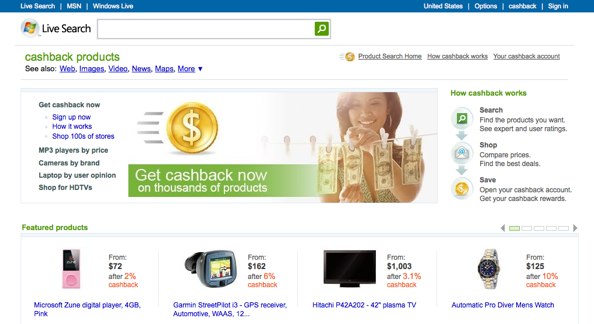 Microsoft says that Live Search Products and Live Search Cashback have now been unified into a single experience. You can now access Cashback on Live Search Products page, which is Microsoft’s comparison shopping vertical site. Microsoft has migrated Cashback from the Jellyfish platform (the social shopping site that Microsoft purchased in 2007) to the Live Search platform. Last year, Microsoft launched the Live Search Cashback program, which gives users monetary incentives to click through and buy products from the ads they’re shown. It was controversial since the move to gain market share from Google was so drastic and seemingly desperate. The Cashback program didn’t have much of an effect on Microsoft’s search, with its marketshare initiallly bumped up before hovering around 9 % (which is what it was before the program), and Google’s share remaining at nearly 62 %. But there was a silver lining to the program for Microsoft; its ad revenue from Live Search increased. Last fall, Microsoft reported a 30% growth in Cashback offers made to customers, with 20 of the web's 50 top online retailers in the U.S. participating in the program. Live Search Products was launched in 2006 as a commerce-only search engine/shopping comparison engine to give users more relevant results when looking to buy items online. Live Search Products was launched to be a direct competitor to Froogle, which was reborn as Google Search Products. Microsoft’s Live Search name has gone through several rebranding efforts of its search site in the effort to keep up with the search capacities of Yahoo and Google. It’s pretty easy to lose track of all the different names Microsoft has tested for its search engine. There was MSN Search, Microsoft Search, Live Search and possibly Windows Live Search. Rumors have been flying around about the new name, which appears to be Kumo, which means "cloud" or "spider" in Japanese. So perhaps Live Search Products will soon be Kumo Products? Crunch Network: CrunchBase the free database of technology companies, people, and investors |
| Confirmed: CNN Acquires CNNBrk Twitter Account (Updated) Posted: 15 Apr 2009 02:22 PM PDT
Earlier today The Business Insider reported that CNN may have acquired the massively popular CNNbrk Twitter account, which is currently in a heated race with Ashton Kutcher to attain 1 million followers. Thing is, up until recently CNN didn’t actually own that account, which made the story’s coverage on the cable network over the last few days all the more bizarre. I just got off the phone with James Cox (whose personal Twitter account is here), who created and has maintained the account. He confirms that CNN has in fact acquired CNNbrk. CNN has confirmed the deal (see below). As of this writing, CNNbrk has over 945,152 followers (and rising fast), making it the most popular Twitter account. Update: CNN has confirmed that it has taken control of the CNNbrk account, though the company isn’t viewing it as an “acquisition”. Rather, CNN has signed James Cox to a consultant contract agreement, which included the transfer of the account as part of its conditions. Any financial compensation due to Cox is being offered for his services, which happen to include his Twitter account along with teaching social media workshops, among other things (though I suspect he’s getting paid substantially more than the market rate for his consulting). And while the ownership of the account has only changed hands in the last few days, CNN says that Cox has actually been working alongside the network since early 2007, only a few months after Cox created the account as a way to send breaking news stories to his cell phone. The two parties decided to transfer ownership as the account’s number of followers began to take off over the last few months (and especially in the last week or so). Update 2: As a comment below points out, selling “free” Twitter names is apparently ‘against Twitter rules’, though this may only apply to accounts that are inactive. Given the nature of the consulting arrangement between CNN and Cox, it isn’t clear if Twitter will allow users to sell their accounts. Crunch Network: CrunchBase the free database of technology companies, people, and investors |
| Universal Search Takes Off: Kosmix Posts 419% Growth In March Posted: 15 Apr 2009 02:07 PM PDT Kosmix, the universal search engine that dynamically generates guides to search queries using dozens of different content sources, is quickly gaining momentum. According to today’s latest comScore numbers, the site has jumped up to 3.2 million monthly uniques in March - a 419% growth since February. Kosmix is meant to serve as a search engine for when you want to get a quick overview of any topic (In some ways, its approach is similar to Mahalo’s). But unlike Mahalo, all ‘guides’ are built using search algorithms rather than human editors. Data is pulled from a variety of sources, including YouTube, Wikipedia, and news sites to generate each guide. This makes the engine very flexible, as it can attempt to build a page for any search query, but it has also can lead to some quirks - occasionally you’ll find items in a Kosmix page that seem out of place, which human editing would presumably avoid. But for the most part it works well, and it’s growing quickly. The site began testing its universal search in a private alpha last summer but only began promoting it to the public in December, when it also announced it had closed a $20 million funding round led by Time Warner (the company has raised $55 million since 2005). And while its technology is primarily geared towards search, it is also flexible: last month it launched a personalized newspaper called Meehive, which uses the Kosmix engine. Update: I’ve updated the image below to show Kosmix’s traffic over a longer period of time. Note the steep drop last year,
Crunch Network: CrunchBase the free database of technology companies, people, and investors |
| Survey Says Baby Boomers Think Playing With Your Blackberry During A Meeting Is Rude Posted: 15 Apr 2009 02:04 PM PDT
The generation gap all too often expresses itself as a technology gap. A survey of white collar workers (most of them in the legal profession) commissioned by NexisLexis offers a glimpse at changing attitudes towards technology between Baby Boomers, Gen Xers and Gen Yers. (Full survey embedded below). One thing Baby Boomers apparently really hate is when the rest of us are not paying attention during meetings and instead checking our e-mail or Twitter accounts on our mobile phones and laptops. A full 69 percent of Baby Boomers surveyed agree that “PDAs and mobile phones contribute to the decline of proper workplace etiquette,” while only 47 percent of Gen Y workers see what is the big deal. (By the way, who says “PDA” anymore? I am going to go out on a limb here and guess that it must have been a Baby Boomer who put together the survey). Pretty much everybody knows that using a laptop or Blackberry during meetings is downright rude. Even 57 percent of Gen Y respondents think that it is “impolite” (compared to 67 percent of Baby Boomers). But the Gen Y workers surveyed can deal with it better. Only 49 percent find such behavior “distracting,” while 68 percent of Baby Boomers did. And so it goes, younger workers also tend to find such multi-tasking during meetings more productive (Gen Y: 35% versus Boomers: 20%) and efficient (Gen Y: 35%; Boomers: 17%). While Gen Xers find them to be the most unavoidable (29% versus 21% for Gen Y and 17% for Boomers). Perhaps that is because we rely more on e-mail than Gen Y workers The average Boomer gets the most e-mails per day (69), followed by Gen X (63), and then Gen Y (40). Those number seem awfully low to me. I get more than 69 e-mails an hour (Granted, I am weird). My advice to anyone who finds Blackberry or laptop use during meetings rude or distracting: have fewer meetings or get to the point faster. Invariably, the conversations people are having on their laptops, iPhones, and Blackberries are increasingly more interesting than the ones that are going on in the room.
Crunch Network: CrunchBoard because it’s time for you to find a new Job2.0 |
| Fluid Uses Facebook Chat And Status Updates To Help Retailers Make Shopping Social Posted: 15 Apr 2009 01:15 PM PDT 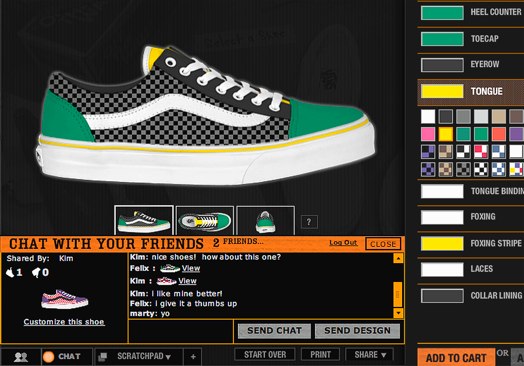 The integration of shopping and social networking features is not a new phenomenon. eBay launched eBay Neighborhoods a few years ago, Hearst acquired social shopping service Kaboodle, and there’s Jellyfish, which was bought by Microsoft. Retailers themselves have half-heartedly embraced social networking as a marketing tool, adding branded Facebook pages, creating profiles on social networks and posting ads. Interactive online retail marketing agency Fluid Inc. hopes to take this one step further for retailers. Its “Fluid Social” technology allows for retailers to offer a chat feature on their Websites that integrates shoppers’ Facebook Friends and Groups in order to enhance their online shopping experience. Here’s how it works. If you see an item you like while browsing a retail site, you can request feedback about a product from your friends by pushing information about the product (such as images from clothing, links to products, and movie clips) to your Facebook status update. Under the product image, you are given the option of clicking on a ‘Share on Facebook’ button and are prompted to add the given retailer’s Facebook application. Once added, you can rate the item and ask for feedback via a link back to the product that is published directly into your status update feed. Your friends’ comments or ratings on the status update can be seen directly on the product’s page on the retailer’s site and are updated in real-time. The app also lets you invite specific Facebook friends to rate the product without publishing to your status update. Of course, throughout the shopping process, you must be logged into Facebook. Fluid’s technology also allows for real-time chat separate from Facebook. This feature lets you send an email to a friend inviting them to join you in a chat about a product. Once the invitee joins, you can openly chat with them via Facebook Chat on the product page of the site. This implementation is promising for several reasons. For retailers, these peer-to-peer interactions allows for shoppers to never leave their site to get feedback from friends. For shoppers, it lets them see ratings and comments on specific products from friends whose opinions they value and trust. And the real-time chat let’s you get this information instantaneously. Currently, Fluid has enlisted Vans, Lucky Brand Jeans and Warner Entertainment to incorporate Fluid Social. Collaborative shopping isn’t new—plenty of retail sites offer live chats with store reps, but the ability to do it directly with your friends and Facebook contacts adds a new twist. With the current drought in consumer retail spending, retailers may be looking for other ways to engage consumers. Fluid says it plans to integrate Twitter into its technology in the near future by allowing users to tweet directly from the retail site as well. Heaven help us. 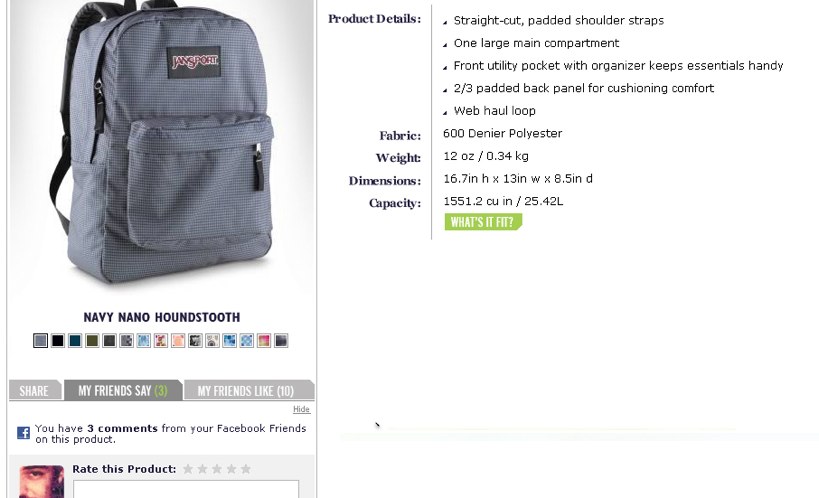 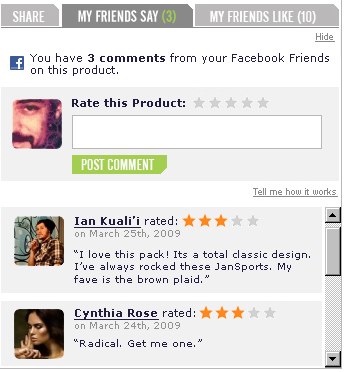 Crunch Network: CrunchBase the free database of technology companies, people, and investors |
| Will Twitter Be Acquired in 2009? You Can Bet On It. Posted: 15 Apr 2009 12:13 PM PDT
Panama based BetOnline is letting people place bets on whether or not Twitter is acquired in 2009. They’re paying even money on a Google acquisition, the most likely suitor. Facebook pays 5 to 1, Microsoft pays 10 to 1 and Yahoo pays 20 to 1. If anyone else buys them it pays 5 to 1. Think they’re staying independent? You’ll get $2.5 for every dollar you bet if you’re right. These odds will change over time as bets are placed, so if you have inside information or just have a gut feeling you’re willing to bet on, get your wallet out now. And I guess if the Twitter guys decide not to sell, they can make a nice bit of cash on the side by placing the appropriate bets. Company spokesperson TJ Kendrick says he expects “brisk wagering on their new Twitter acquisition prop.” Crunch Network: CrunchBase the free database of technology companies, people, and investors |
| New York Times Roars. Too Bad They Live In Oz. Posted: 15 Apr 2009 11:19 AM PDT
The article had significant factual errors, most of which were called out by Jason Calacanis and myself. Stross ignored Tesla’s goal of trying to build a low cost all electric car, focusing only on the pricey $109,000 Tesla Roadster, their first effort. The fact that the government loan was being requested in order to build the manufacturing plant for their second model, the $50,000 Model S, wasn’t mentioned. Or even a token gesture towards the nobleness of the attempt to build a green car for the masses after that. The story was subsequently rewritten with most of the offending incorrect language removed, but the damage was done. The story re-appeared last week when Tesla CEO Elon Musk, speaking candidly on camera to our own Sarah Lacy, called Stross a "a huge douchebag…and an idiot" for the tone and inaccuracies of his story. He adds “What is he doing picking on an electric car company? Why would he pick on the little guy who is trying to do good when you've got egregious waste of money in the tens of billions occurring in Detroit?" So Musk calls Stross and the New York Times to the mat. What did New York Times editor Tim O'Brien do to uphold the dignity of the venerable newspaper? He hired a mercenary. To shoot the messenger. Enter the snarky and often vicious New York Observer, who’s always ready for a wrestle in the mud. In an article today by John Koblin called “Silicon ‘Valley Girl’ Gets Tough With Times” O’Brien says “I still stand by Randy's column” (presumably the current rewritten version) and attacks Lacy for not calling him for his side of the story. "You can't help but watch that interview and marvel at the squishy familiarity between Lacy and Musk," he said. "And I wonder whether or not some journalistic blinders had popped off." Then Koblin goes on the attack against Lacy directly, using every weapon at his disposal. He reminds readers of the Lacy/Zuckerberg interview in 2008 without mentioning that many, including us, thought criticism was unfairly pointed at Lacy. Koblin also says “Ms. Lacy spent years as a Business Week reporter, but now she spends her time doing videos for Yahoo, serving as editor at large for TechCrunch—a Web site that very much played up Ms. Lacy's "douche bag" scoop—and doing other contract jobs” which trivializes her Yahoo TechTicker job and doesn’t mention that she still writes two monthly columns for Business Week. And no mention of her recently published book. If O’Brien and Stross want to defend their atrocious work, the place to do it is at the New York Times, not some other publication. And they should aim their arguments at Elon Musk and Tesla, not the journalist who got Musk to talk on camera. Lacy, a hugely respected journalist in Silicon Valley, has no need to defend herself for getting a scoop like this. I’m appalled at what the NY Times has done here, and it won’t soon be forgotten. The correct course of action would be to update the story, not quietly change the language, and then take their lumps when called out by Tesla directly. Only a coward would ignore the actual story and go on the attack against the journalist who pushed the story further. So roar all you want, NY Times. We know how frightened you really are. Crunch Network: MobileCrunch Mobile Gadgets and Applications, Delivered Daily. |
| Despite Huge Activity, Digg Offers A Compromise On DiggBar Posted: 15 Apr 2009 11:13 AM PDT
Digg's VP of engineering John Quinn, writes in a post today that Digg will change the behavior of shortened URLs. For anyone not logged into Digg, they will now get a 301 redirect to the site being pointed to sans the DiggBar. Users who are logged into Digg and have not opted-out of using the DiggBar, will still get the 200 variety, meaning they will technically reside on Digg’s servers. But the opt-out part is important to note. Users of Digg will still get the DiggBar (and its 200 code) by default, so if you don’t want it, change it in your settings or sign out of Digg. Digg clearly has made it opt-out rather than opt-in because despite the controversy, the DiggBar is working the way Digg wanted. Quinn notes that since the DiggBar’s launch, roughly 45% of all digging activity now comes through the DiggBar. He also notes that a quarter of the users are using it to find other content on the site. With the DiggBar now doing 301 redirects for non logged-in users, Quinn says that the Digg-shortened URLs will not appear in the major search engines. Of course, he also said that last week when he gave an update on the DiggBar amid the first wave of controversy. Despite his assurances last time, huge sites like Engadget opted to block the DiggBar. Other sites, like The New York Times already block iframes, which means the DiggBar won’t work there either. We’ll be interested to hear what Danny Sullivan and other SEO experts have to say about these latest changes. Early reactions from others who were opposed seem pretty favorable. Digg says it’s working to get these changes out next week. And it says it’s still listening to feedback about the tool, which means that we’ll probably have another update on another round of changes in a week. But Quinn notes that the DiggBar is valuable to the “vast majority” of Digg users — which is probably true, it’s just some publishers that don’t like it. And who cares about them (us) anyway? If you don’t like Digg’s URL shortener, feel free to use ours. Just hit the ‘Tweet This’ button at the bottom of each post to send it to Twitter with our shortener. Or find a short URL at the very bottom of the comment section. Crunch Network: CrunchBase the free database of technology companies, people, and investors |
| Kutcher/CNN Twitter Fight Day 3: EA Ups The Ante Posted: 15 Apr 2009 10:56 AM PDT
Kutcher was still trailing CNN by tens of thousands of followers, so he upped the ante by offering his one millionth follower the popular game Guitar Hero. A pretty weak offering for a movie star. He later came back with an offer to buy 10,000 bed nets to help fight malaria in third world countries. Nice. And now, game maker Electronic Arts has now stepped into the fight with a big offer as well. EA tweeted out earlier today that if Kutcher beats CNN to a million, it will put Kutcher’s 1 millionth follower in a future EA game. The Twitter community is bound to eat this up. And if Kutcher has any shot, they need to. As of today, he’s still over 40,000 followers behind the cable network. And, while a lot of people aren’t mentioning it, he’s still actually behind Britney Spears, who just crossed the 900,000 follower mark. But Kutcher is growing faster. In just the past hour or so he’s added a couple thousand followers, and when word of this EA deal gets out, that should jump. But will it be enough to jump the 40,000+ divide with CNN before it hits 1,000,000? Kutcher just better hope no real huge news breaks in the meantime. Of course, I just got off the phone with CNN — they’re working on a million Twitter follower story as well. Update: What’s really interesting about all of this is that the @cnnbrk account that Kutcher is racing against, isn’t even maintained by CNN. Notice how there are no links to CNN stories and the account is following one person? That person is James Cox, a San Francisco man who apparently created the account, as he points out in the comments, clearly wanting his due. Well, here it is James. Update 2: It has now been confirmed that Cox has now sold the CNN Twitter name to CNN for an undisclosed sum. Update 3: EA has upped its ante once again. Now, it is offering Kutcher’s 1 millionth Twitter follower a copy of every game it make in 2009 on top of a role in its Sims 3 game. Update 4: Twitter user NuMessiah has crunched the numbers and expects Kutcher to beat CNN to a million followers, and thinks that will happen in roughly 20 hours from now. He also points out that Kutcher has finally passed Britney Spears to move into second place on the follower list. Crunch Network: CrunchGear drool over the sexiest new gadgets and hardware. |
| Smule Outdoes Itself Again: Leaf Trombone Is An Instant iPhone Classic Posted: 15 Apr 2009 10:47 AM PDT
When the iPhone App Store launched last year, a flood of ‘virtual’ music apps, ranging from pianos to drums hit the market. Most of these didn’t fare so well on the iPhone’s small screen, save for one fantastic standout: Smule’s Ocarina, which was perfectly suited for the iPhone and was fairly easy for beginners to pick up. The app became a massive success, and became one of the App Store’s most popular applications ever. Today, Smule has released Leaf Trombone: World Stage, a new virtual musical instrument that is better than Ocarina in nearly every way. One of the biggest issues newbies had with Ocarina was that there was no musical instruction built in - users would have to visit Smule’s website, where they could download ‘tabs’ of their favorite songs. Without the tabs, playing familiar tunes became an exercise in frustration, and I suspect many users never made it to the website and simply tried to do the best they could on their own. Leaf Trombone solves this issue with a built-in tutorial mode that shows players where they should place their fingers (it also has a nice backing track to make you sound ever better). Using an integrated browser, users can sort through lessons created by other users, which range from classic songs like ‘Canon in D’ to more contemporary fare like the Super Mario Bros. theme song. This feature alone will make the app much more accessible (and addictive) than Ocarina was. The app’s ‘World Stage’ isn’t just for show, either. While Ocarina had some degree of community built-in (you could listen in in real time as other Ocarina players played songs), there wasn’t really any way to interact with them. Leaf Trombone invites users to judge their peers as they play, allowing them to display emoticons and send comments in real time. Leaf Trombone enables this kind of real-time interaction by using Smule’s innovative audio broadcasting technology, which can recreate the subtle nuances of the player’s breath control without having to stream massive music files. Other features, like a built-in achievement system (think Rock Band) allow users to get awarded when they complete specific tasks, adding another layer of depth to the app. I like Leaf Trombone a lot - it taps into the iPhone’s network effect, it’s fun to play, and anyone can get started with a minimal amount of effort. But I have one major concern: you’re playing a trombone. Not to insult all of the trombonists out there, but the instrument is not especially soothing to the ears. Unlike the Ocarina, which is surrounded in mystique and has a tranquil, soothing sound, the trombone is a bit more… abrasive. That said, the application more than makes up for this, and if it becomes an issue Smule can almost certainly just update the app with a new set of sounds.
Crunch Network: CrunchBase the free database of technology companies, people, and investors |
| Boom! Twitter More Than Doubles Unique U.S. Visitors To 9.3 Million In March Posted: 15 Apr 2009 10:22 AM PDT
If it seems like Twitter is growing faster and faster each day, that is because it is. ComScore has released its March numbers for the U.S., and it estimates that unique visitors to Twitter.com grew 131 percent between February and March to 9.3 million visitors. No wonder Twitter is more popular than Britney. Not only did Twitter more than double the number of people that go to its site in a single month, but it accelerated its growth from the 55 percent rate it experienced in February. These numbers do not include international visitors, nor do they include all the usage on desktop and mobile clients, which is significant in Twitter’s case. But it is a useful proxy. So to just to give a sense of the type of growth Twitter is going through, here is the month-to-month growth in U.S. unique visitors so far this year: March, 2009: 131% In February, comScore estimated that Twitter.com had worldwide 9.8 million visitors worldwide and 4 million U.S. visitors. If that 41 percent ratio of U.S. visitors to total worldwide visitors still holds (in January it was about the same), it would mean that Twitter.com attracted more than 20 million unique visitors worldwide. ComScore releases international figures later in the month. Crunch Network: CrunchGear drool over the sexiest new gadgets and hardware. |
| DIY Social Network GROU.PS Adds Ranking System To Assign Privileges To Contributors Posted: 15 Apr 2009 09:02 AM PDT
GROU.PS, a do-it-yourself social network focused on moderated online collaboration is launching a new tool, ActivityRank Pipelines. The feature is a point and reward system that lets moderators of a social network measure and rank members’ content contributions and then extend moderation privileges to members based on these rankings. The moderators are able to activate the “ActivityRank” feature within their admin interface, which can rank users by how much content is submitted onto the network and by the type of content. For example, a blog focused network could give more points to the moderated blog entries than the contributed photos or links. The administrator then create roles for the group, such as Designer or Blog Moderator. A “Pipeline” can be set up, where the admin can define at what ranking a member is rewarded with what role. Currently in other DIY social networks, like Ning and KickApps, you can give members administrative roles within a network but the decision is done manually by the lead admin and isn’t based on a ranking system. The GROU.PS feature is a useful way to create an incentive for members to create more content for a network, but it is more ideal for a large network with a good amount of content, like this medical GROU.PS network which has 10,000 members. Smaller networks just wouldn’t make use this feature. GROU.PS’s networks are attractive to users because it lets you run all of your group's collaboration tools from one GROU.PS domain using a single login. The system supports wikis, photos, links, blogs, calendars, chat, forums, maps, profiles, and subgroups - each of which is available as a plug-and-play module for your community. These modules also allow users to pull in their data from other third party services (flickr, Digg, blogs, etc). Currently the entire GROU.PS network has 800,000 active users, according to founder Emre Sokullu, which is an increase from the 200,000 active users it had a year ago. Venture backed, GROU.PS raised $1.1 million in Series A funding from Golden Horn Ventures in July 2008. But it seems that the social network is having trouble gaining users in the U.S against the leader in the DIY space, Ning, which is growing at a rapid pace. GROU.PS’ users is most popular in Japan and Brazil. Crunch Network: CrunchBoard because it’s time for you to find a new Job2.0 |
| You are subscribed to email updates from TechCrunch To stop receiving these emails, you may unsubscribe now. | Email delivery powered by Google |
| Inbox too full? | |
| If you prefer to unsubscribe via postal mail, write to: TechCrunch, c/o Google, 20 W Kinzie, Chicago IL USA 60610 | |
 I’m very pleased to announce a new startup investment program today called
I’m very pleased to announce a new startup investment program today called 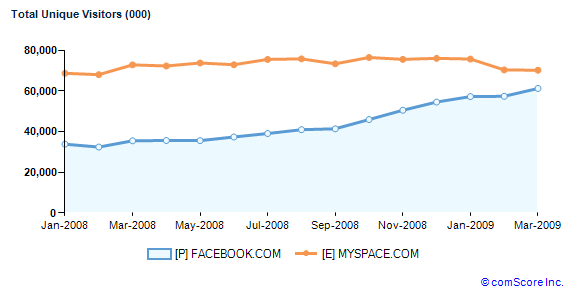
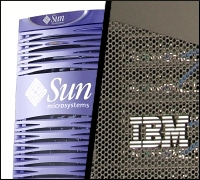 Looks like Sun Microsystems is open to renewing acquisition talks with International Business Machines (IBM) if the latter makes a stronger commitment to actually closing the deal, according to
Looks like Sun Microsystems is open to renewing acquisition talks with International Business Machines (IBM) if the latter makes a stronger commitment to actually closing the deal, according to 

 Yahoo’s closure of their
Yahoo’s closure of their  When it first came to my attention
When it first came to my attention 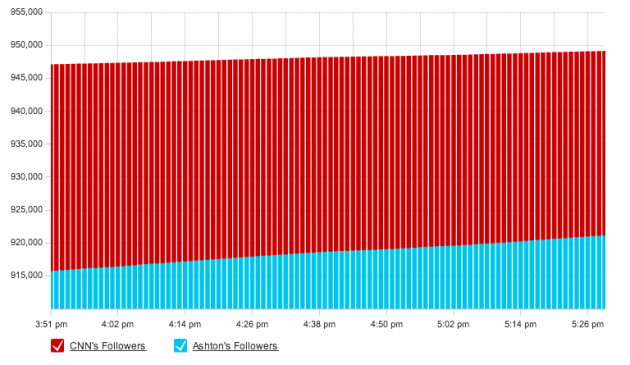
 Facebook has been pitching for a new round of funding these last few months to bridge itself to an IPO sometime in the future. We’ve known that since October, when (
Facebook has been pitching for a new round of funding these last few months to bridge itself to an IPO sometime in the future. We’ve known that since October, when ( Apple makes a lot of great products. In fact, I’d say that the percentage of products it makes that are great is higher than that of just about any other large company. But one product it makes is absolutely awful: The Mighty Mouse.
Apple makes a lot of great products. In fact, I’d say that the percentage of products it makes that are great is higher than that of just about any other large company. But one product it makes is absolutely awful: The Mighty Mouse.

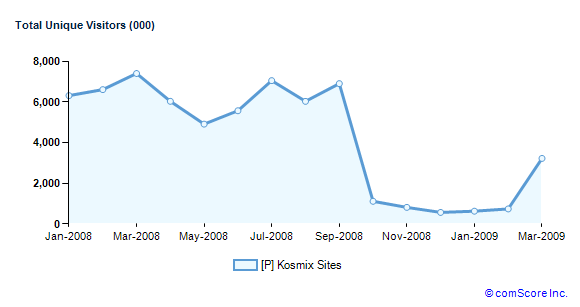
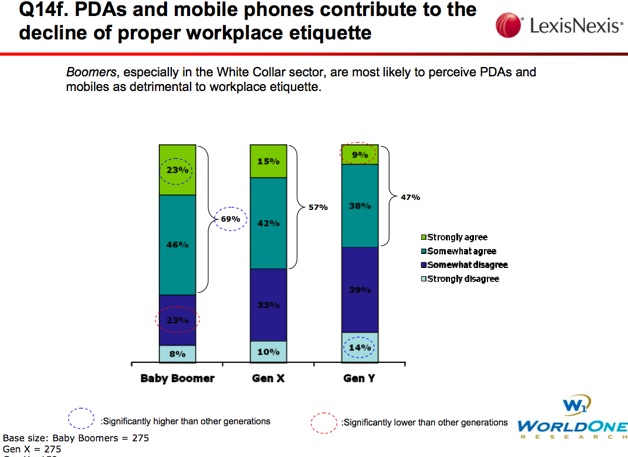
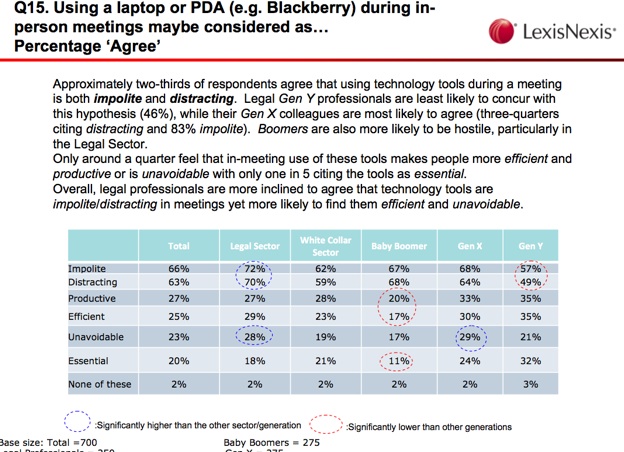
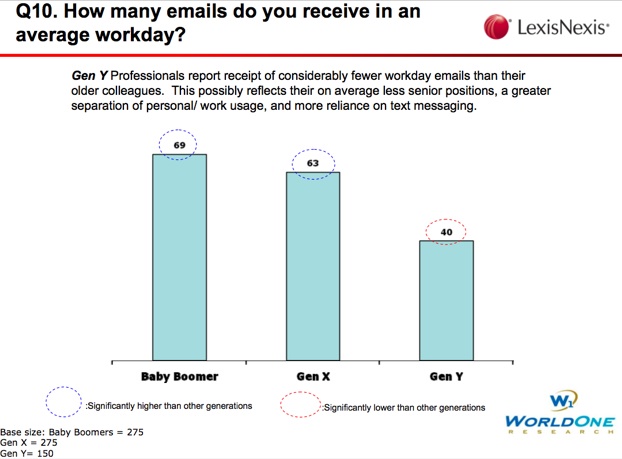
 Forget the pundits. If you want to know the real odds of something happening or not, follow the money. And at least one online bookie is saying that it’s more than 50% likely that
Forget the pundits. If you want to know the real odds of something happening or not, follow the money. And at least one online bookie is saying that it’s more than 50% likely that  This Tesla-related story is now bordering on the absurd. In November the New York Times
This Tesla-related story is now bordering on the absurd. In November the New York Times  The DiggBar, Digg’s browser-based toolbar for digging and sharing content, has seen a tidal wave of controversy since its
The DiggBar, Digg’s browser-based toolbar for digging and sharing content, has seen a tidal wave of controversy since its  A couple days ago, actor Ashton Kutcher
A couple days ago, actor Ashton Kutcher 



No comments:
Post a Comment